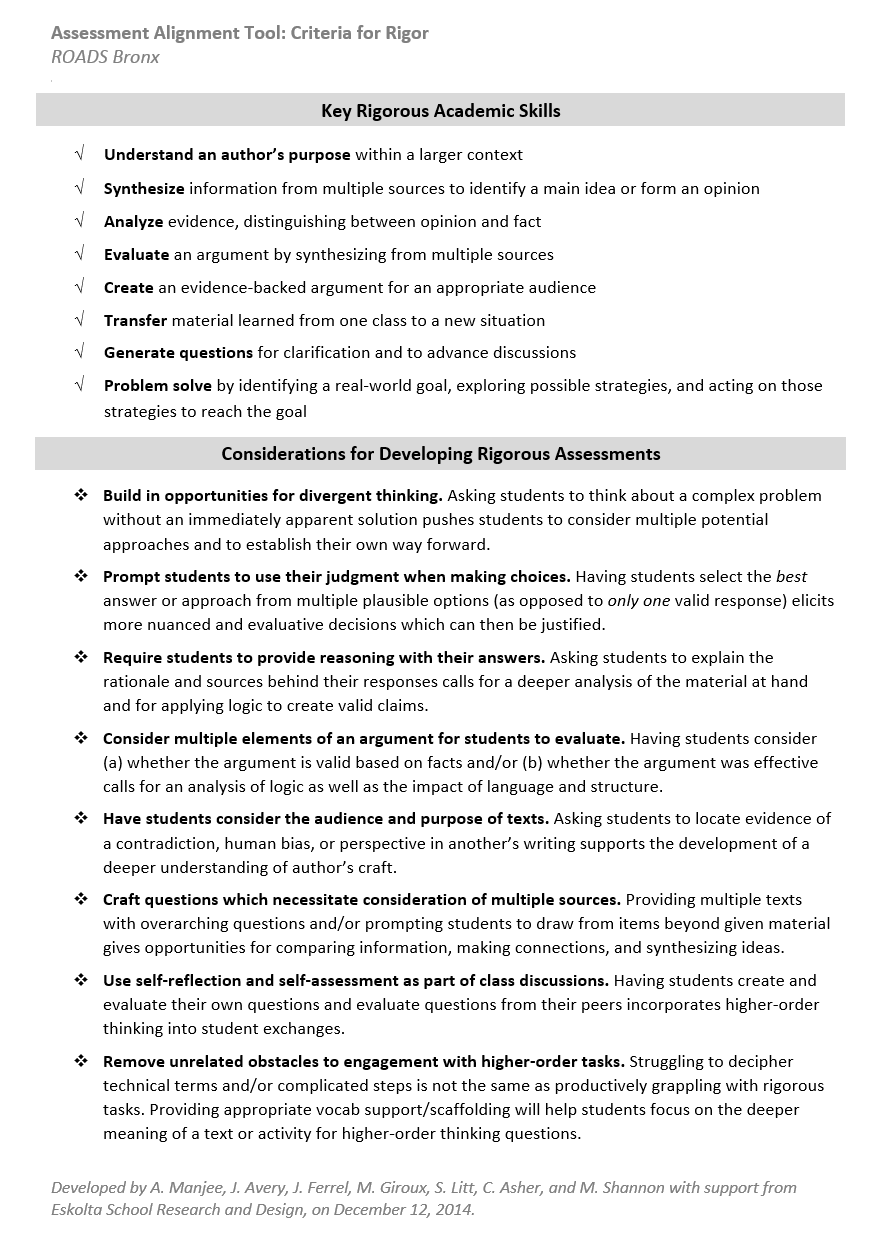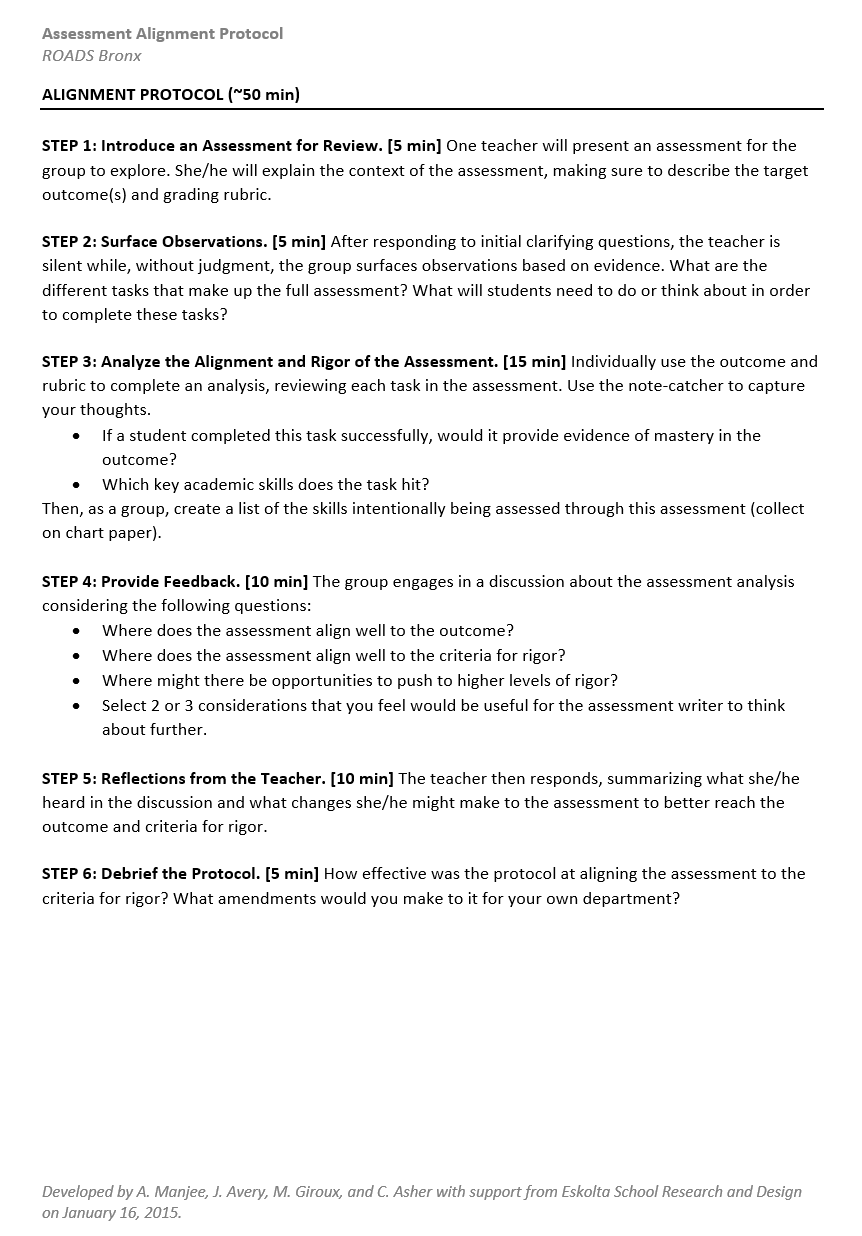What We Do: Design Projects >> Feedback & Assessment
Aligning Assessments to Mastery at ROADS Bronx
Educational grading policies have traditionally relied on time-based systems, which grant students credit for the number of hours in a class rather than their proficiency of skills learned. While this system might have seemed more efficient in the past, students could advance from one grade level to the next without mastering skills necessary for college and career readiness. As an alternative, competency-based systems support student advancement by awarding credit according to students’ mastery of skills.1 At ROADS Charter School in the Bronx, a transfer school dedicated to serving students who are overage and under-credited, competency-based learning has helped students re-engage in their learning as each class is structured so that students focus on mastering 10 clear, meaningful, and targeted “outcomes,” or competencies. During the 2014–15 school year, the leadership team at ROADS decided to strengthen this outcomes-based system by focusing their attention on the alignment between their assessments, their outcomes, and their standards for rigor.
The team of department heads at ROADS, with assistance from Eskolta Senior School Developer Aaron Boyle and Research and Design Facilitator Emily Kleinman, began with four specific goals for all assessments: they would be rigorous, consistent, coherent, and aligned with outcomes. With the help of Eskolta, the team developed both an alignment and a tuning protocol, which they used to measure how closely assessments actually corresponded with the outcomes they had selected as key for each ROADS graduate. The team then continued this process in their respective departmental meetings. The departments and the team of heads engaged in multiple cycles of refinement and reflection: they used protocols first to align assessments to outcomes, then to reflect on the students’ work after administering the revised assessment; the department heads would then regroup to reflect on practice and the refinement process itself.
As a result of this effort, departments have begun to deepen their thinking about what makes an effective outcome and how they use outcomes across the school. For ELA Department Head Melissa Giroux, the aha moment was when she saw “the power of simplicity when it comes to writing competencies.” She explained that her department came to the realization that “outcomes don’t have to be complicated to be rigorous and effective.” Furthermore, the process has enabled departments to collaborate more effectively and help each other clarify their instructional expectations. Jamie Ferrel, the director of special education, reflected that “being the [teacher] who is critiquing is just as valuable as being the one getting feedback” during meetings. As for the future, Chester Asher, the director of curriculum and instruction, already sees “progress that can be built upon” and shared that “to be able to brainstorm, create, test, and refine something and add it to our arsenal of pedagogy is really valuable.”
_________________
1The Art and Science of Designing Competencies, CompetencyWorks Issue Brief August 2012.


